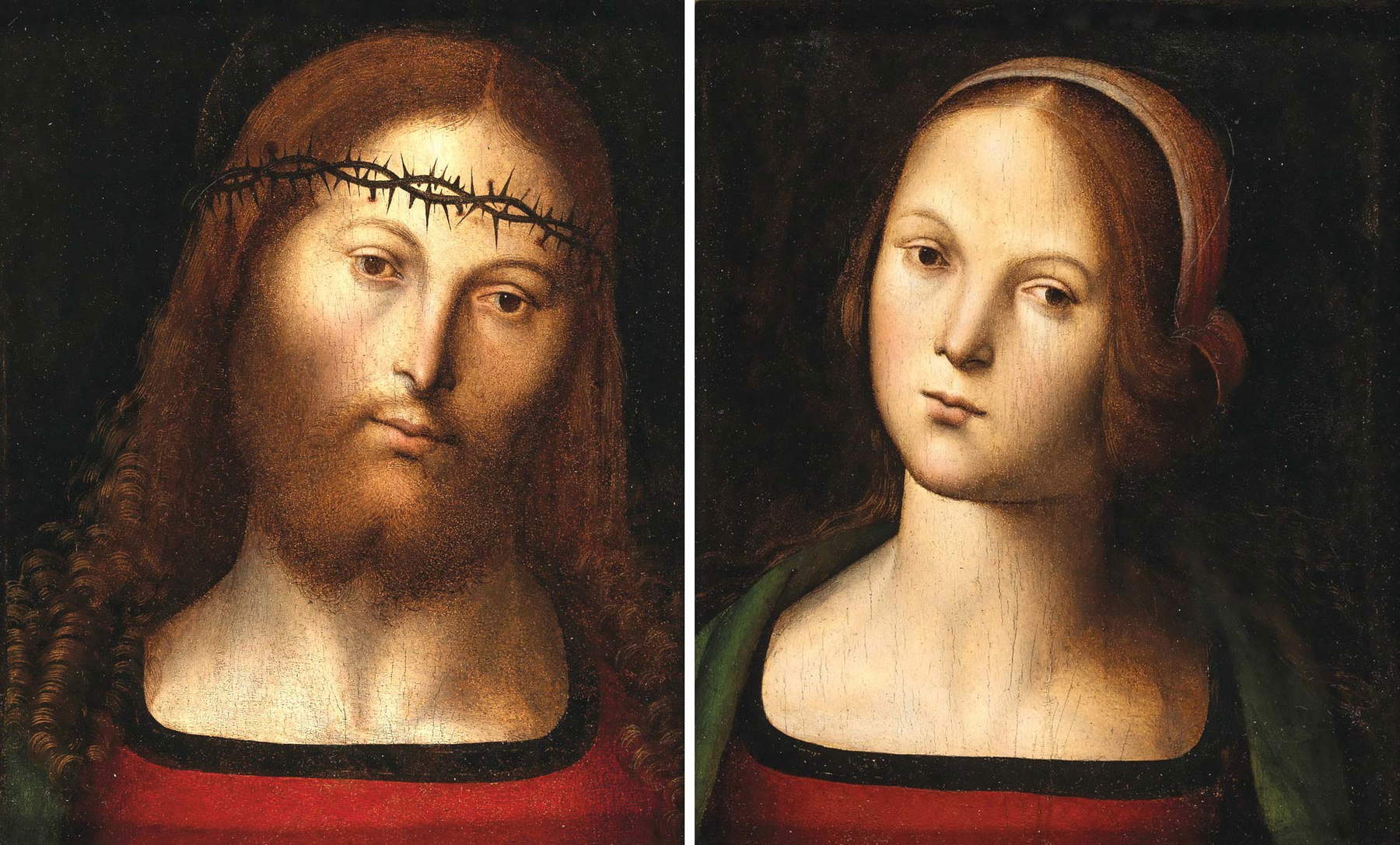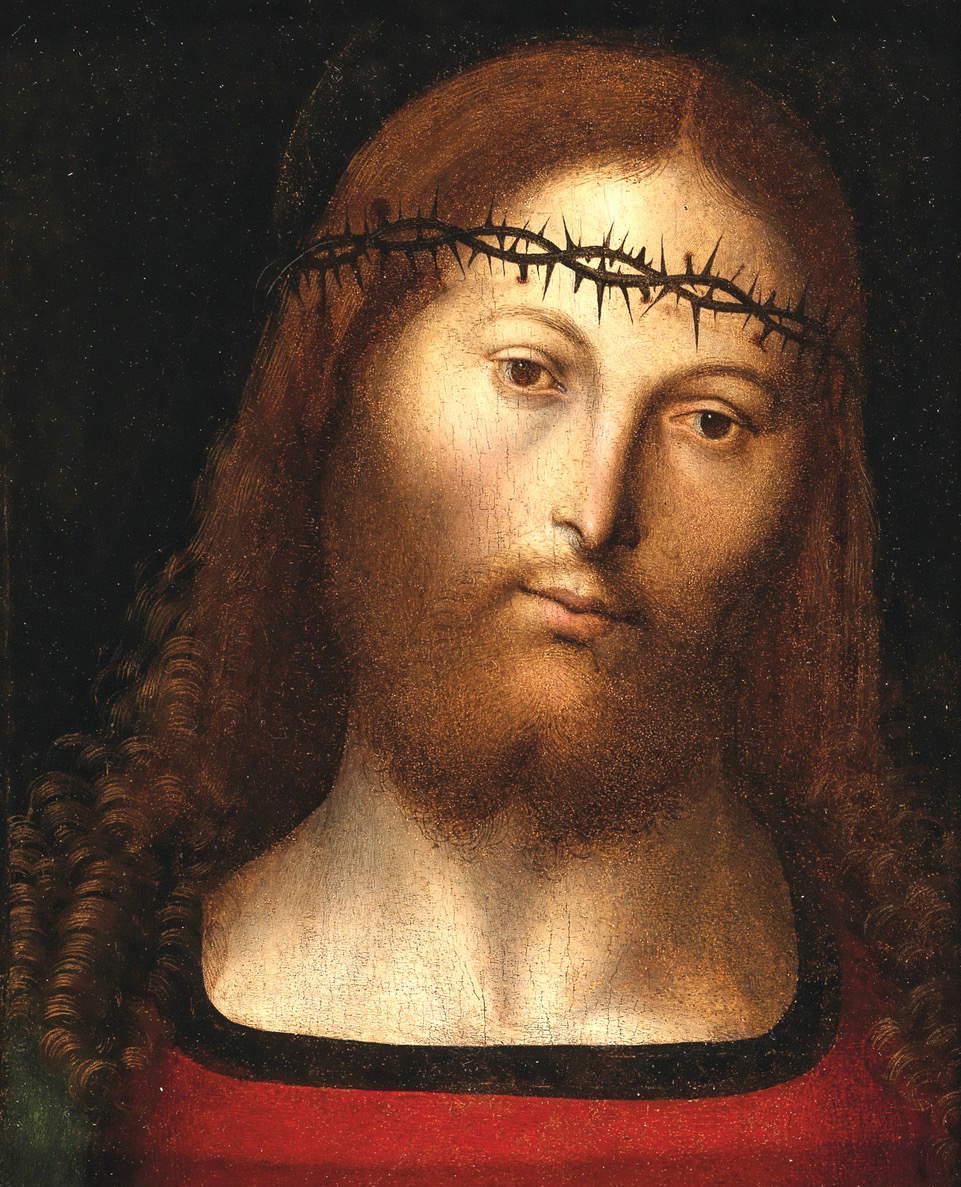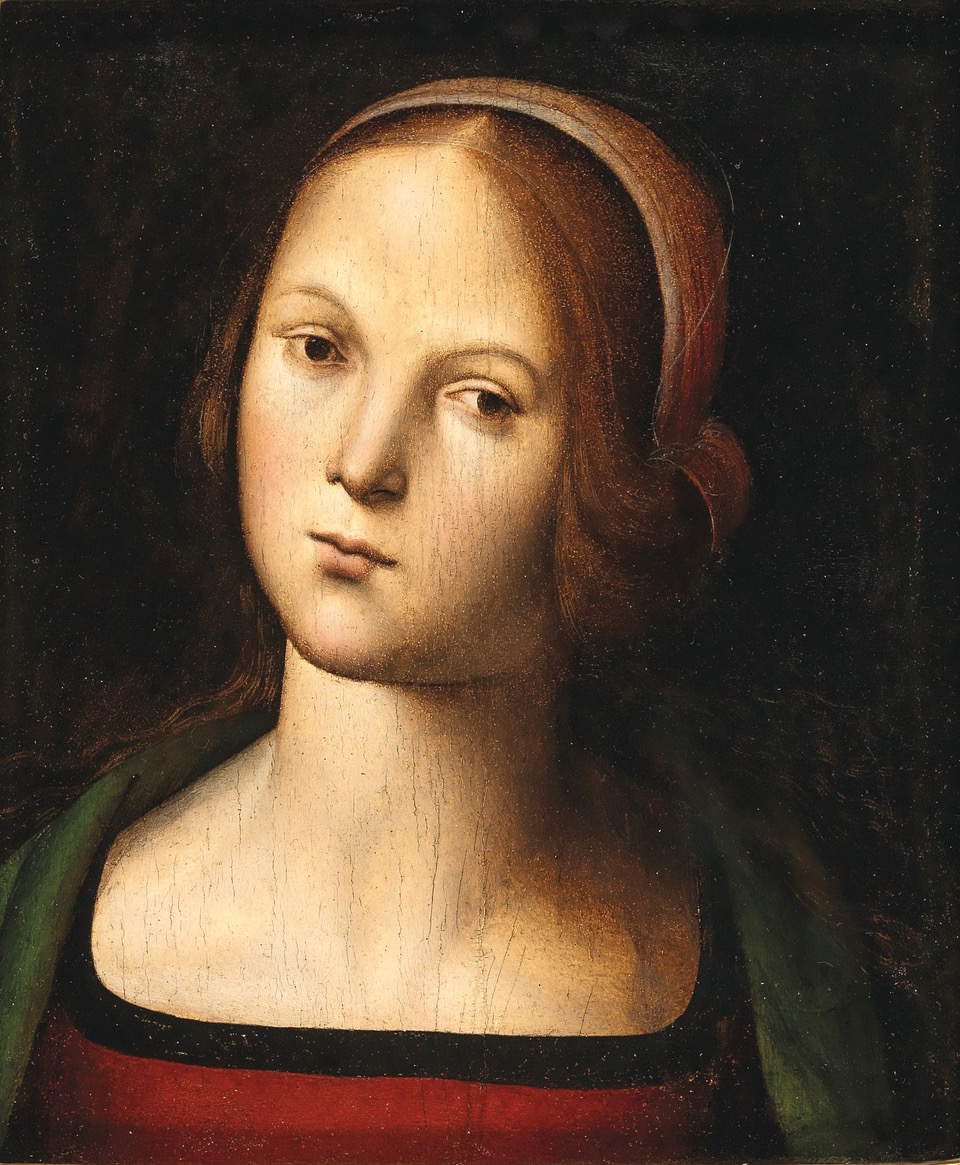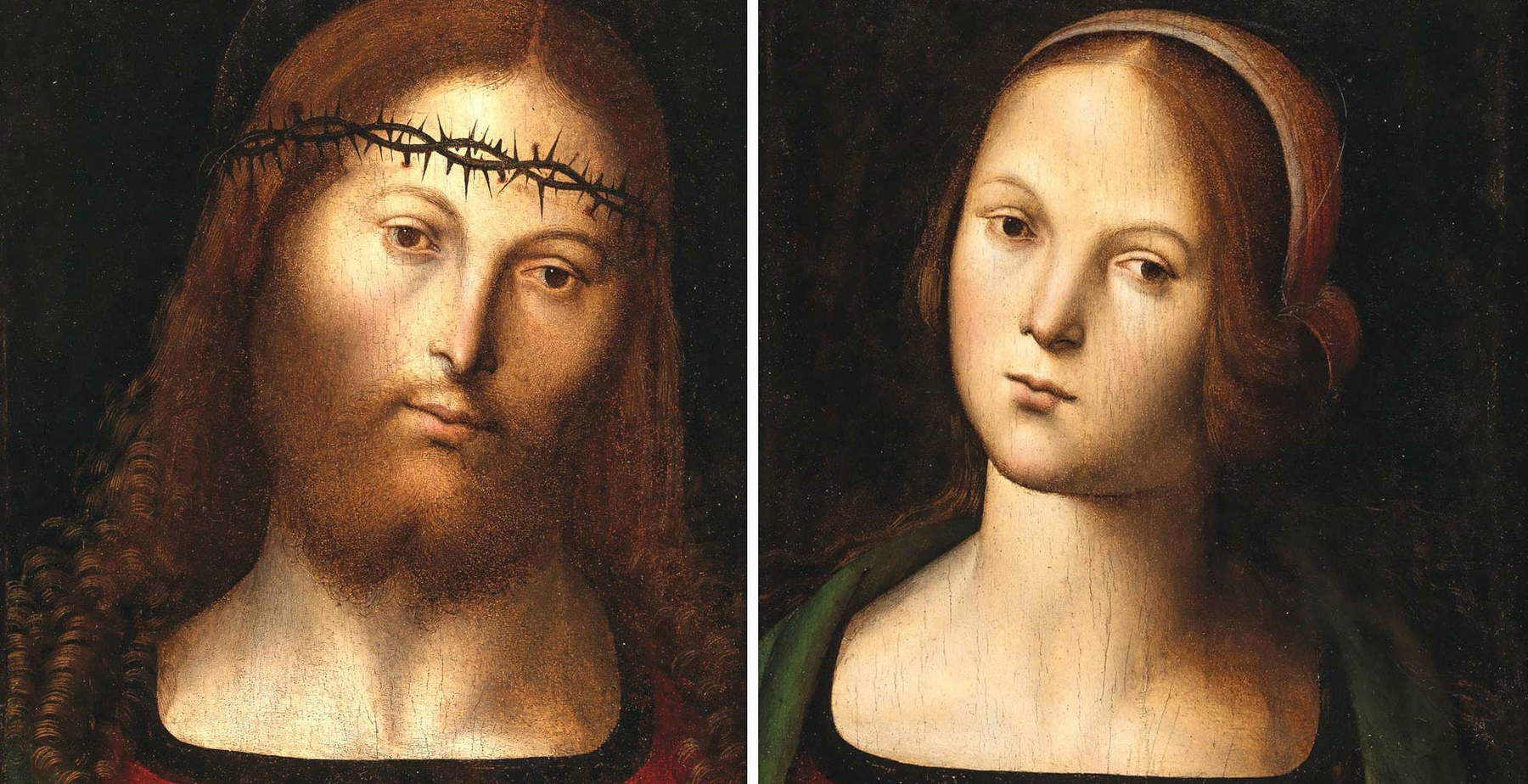Two Perugino panels return to Perugia: purchased at auction by Perugia Foundation
Two works by Perugino (Pietro Vannucci; Città della Pieve, c. 1445 - Fontignano, 1523) long kept abroad are returning to his homeland. Indeed, the Perugia Foundation has announced the acquisition of two panels, Christ Crowned with Thorns (1497-1500) and the Virgin (1500), purchased at an auction held in Vienna at Dorotheum. The works, which belonged to a foreign private collection, will enrich the art collection of the Palazzo Baldeschi Museum in the heart of Perugia, where they will be displayed from mid-December 2024.
The pair of paintings went up for auction last October 22. The two works were sold at telephone auction for the sum of 842,800 euros: a world record for the artist, long celebrated in Umbria in 2023, the year of the 500th anniversary of his death.

What scholars think of the two panels
The panels depict Christ crowned with thorns and the Virgin, respectively, depicted against a bitumen-black background. This stylistic choice, unusual for the period, allows the expressive depth of the faces to be enhanced, depriving the scene of any ancillary elements and focusing attention on the emotional power of the figures. The painting was studied by experts in Umbrian Renaissance painting such as Francesco Federico Mancini and Vittoria Garibaldi. The panels were attached to each other by shell-shaped hinges (still partially present) and are supported by embossed leather designed to resemble the cover of a manuscript or liturgical text.
Garibaldi dated the present panels to Perugino’s Venetian period during the 1590s. Perugino is documented in Venice in 1494 when he was commissioned to decorate the Sala del Gran Consiglio in the Doge’s Palace with a series of portraits and historical scenes, however this work was never completed. In 1495 he was possibly involved in the decoration of the Scuola di San Giovanni Evangelista. According to the scholar, the two panels can be compared to works made by Perugino during or immediately after his Venetian period, such as his Pieta, now in the Clark Art Institute, Williamstown, Massachusetts (inv. no. 1955.947) and the Portrait of a Young Man in the Uffizi (inv. 1890, no. 1474). At this time Perugino was also working on the Lamentation over the Dead Christ preserved in the Pitti Palace (inv. no. Palatina 164) and the Decemvirs Altarpiece in the Vatican (inv. no. MV.40317.0.0).
According to Mancini, the depiction of Christ crowned with thorns in the present diptych seems to be related to the works of Antonello da Messina, who had a major influence on the production of late 15th-century Venetian painting. Mancini compares the treatment of the hair in the Christ purchased by the Perugia Foundation to the dead Christ supported by an angel by Antonello in the Prado in Madrid (inv. no. P003092, see literature). The Virgin also is compared to Perugino’s Magdalene at the Pitti Palace in Florence (ca. 1495, inv. no. Palatina 42), which shows similar facial features with half-closed eyes, thin, arched eyebrows and rosy cheeks.
According to scholars’ opinion, the modeling and details of the figures are typical of Perugino, particularly the clothing, characterized by square necklines and created by the use of colors, including red and bottle green.


Perugino’s period of great creativity
These works would mark one of the happiest and most prolific periods of Perugino’s career. At that time, the artist was mainly active in Florence, but his production was already influenced by various travels and meetings with great masters of the time. During this period, in fact, Pietro Vannucci had become acquainted with Flemish painting and was influenced by the light of Leonardo da Vinci. At the same time, the artistic context of Venice, a city the artist frequented several times, left clear traces in his poetics.
The absence of landscapes or perspective architecture in the two panels testifies to a more mature Perugino, who chose to explore bold new artistic solutions, particularly the use of a black background, a first for the time. This choice, widely adopted by Vannucci during that period, inspired the recent exhibition Nero Perugino Burri, organized in 2023 by Fondazione Perugia of all places, testifying to the contemporary interest in this peculiar stylistic feature of the artist. The two panels were exhibited precisely on the occasion of that exhibition, held last summer.
A hypothesis of prestigious provenance
Although there are no absolute certainties about the history of the two panels, it is possible that these works were part of the private collection of Cosimo Bordoni, a distinguished Florentine intellectual and personal physician to Grand Duke Cosimo III de’ Medici. Indeed, in an inventory dating back to 1703, “two companion paintings by Perugino” depicting “the Madonna and Jesus” are mentioned. If this attribution were confirmed, it would be another valuable piece in the history of the works. Collectors’ passages to England (Northamptonshire) and Switzerland are then attested. Between 2011 and 2012, the panels were exhibited to the public for the first time in Campione d’Italia (the exhibition was titled Perugino unpublished in Campione d’Italia. Four Tablets and a Diptych), after which they figured in the Perugino exhibition at the Musée Jacquemart-André in Paris from September 2014 to January 2015. Third and final exhibition was the aforementioned Nero Perugino Burri.
The panels also feature fine decoration on the back, where they are covered with leather decorated with elegant motifs and the Christological monogram. This feature suggests that the two works were originally conceived as a diptych, probably intended for private devotion. The two figures, Christ and the Virgin, were thus originally connected by hinges, like the pages of a book, a precious object for domestic contemplation.
An opportunity for the public
Starting in mid-December 2024, visitors will be able to admire these two works within the rooms of Palazzo Baldeschi. The panels of Christ Crowned with Thorns and the Virgin will thus be added to an exhibition that celebrates Perugino’s genius and the central role of the city of Perugia in the history of Italian art. Admission to the exhibition will be free, with reservations required.
Through this acquisition, Fondazione Perugia wants to confirm its commitment to the promotion of culture and art, reaffirming the deep connection between the Umbrian territory and the great masters who have marked its history.
 |
| Two Perugino panels return to Perugia: purchased at auction by Perugia Foundation |
Warning: the translation into English of the original Italian article was created using automatic tools. We undertake to review all articles, but we do not guarantee the total absence of inaccuracies in the translation due to the program. You can find the original by clicking on the ITA button. If you find any mistake,please contact us.



























